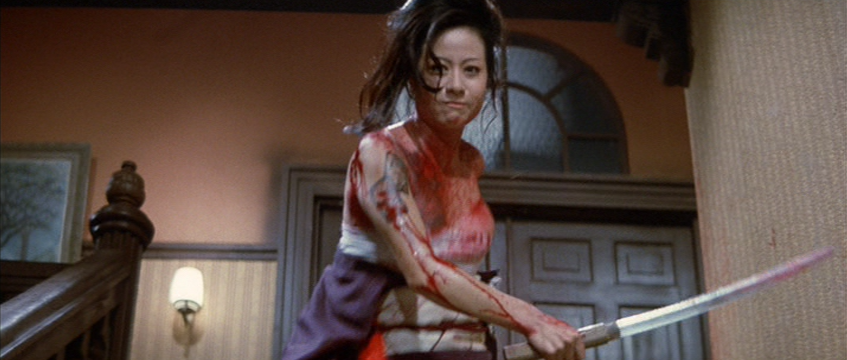
Director Norifumi Suzuki re-teamed with Toei star Reiko Ike after making a number of Girl Boss films together for the action-thriller Sex & Fury (1973). Both director and star specialized in the pinku film and many of that genre’s elements are on display in Sex & Fury. Cult European film star Christina Lindberg is featured in a supporting role in Sex & Fury as part of her two-picture deal with Toei which enabled Sex & Fury to find an audience outside of Japan.
The film follows parallel plots, each led by a woman. The dominant plot concerns Reiko Ike’s vendetta against the yakuza turned politicians who assassinated her policeman father when she was a little girl. The secondary plot of the film concerns Lindberg who has become a British secret agent in order to find her estranged lover Masataka Naruse who is a political radical determined to assassinate the same three men as Ike. Set in 1905 during the waning days of the Russo-Japanese War, Sex & Fury consistently draws parallels between the two narratives, pinpointing the idealistic similarities between personal and political justice.
The dual triumphs and martyrdom at the climax of Sex & Fury reveal Suzuki’s nihilism and suggest that only the most extreme and committed measures can ensure success. In a way Sex & Fury celebrates a kind of radicalism, albeit couched in the traditional value systems of honor and righteousness associated with the popular Yakuza films of the time. By appropriating these values for a female driven, quasi-pinku film Suzuki opens Sex & Fury up for feminist readings despite the half-dozen sex scenes. Although Sex & Fury is not as effectively subversive politically as Suzuki’s masterpiece School Of The Holy Beast (1974), many of the same aesthetic and ideological stratagems are already evident in the earlier film.
Sex & Fury also features a few set pieces that transcend the minimal Toei budget and rival any of the spectacles School Of The Holy Beast has to offer. The most notorious scene in the film is an excellent example of this. Interrupted while bathing, Reiko Ike defends herself from a gang of goons whilst stark naked and wielding a katana. In slow-motion she hacks and slices her would be assailants to bits, from the bath and into the snowy courtyard. Reiko Ike is pure feminine ferocity in this sequence as severed arms fly through the air and blood spatters her exposed skin.
The second truly remarkable scene in Sex & Fury features both icons of erotic cinema. A buckskin clad Christina Lindberg whips a topless and bound Reiko Ike in an old Catholic church before the cold gaze of Jesus Christ rendered in a gigantic stained glass window. It’s a scene that is both fetishistic and dreamy that is loaded with symbols of Western imperialism. This sequence would be just as at home in Baba Yaga (1973) as it is in Suzuki’s revenge thriller.
Sex & Fury is an above average entry in the pinku genre that almost manages to attain the same prestige and infamy as Female Prisoner #701: Scorpion (1972). While pinku films of this period are certainly an acquired taste for contemporary American audiences, the period setting and European cast members of Sex & Fury are likely to negate that. Sex & Fury is an excellent entry point for anyone curious about this type of Japanese film.
